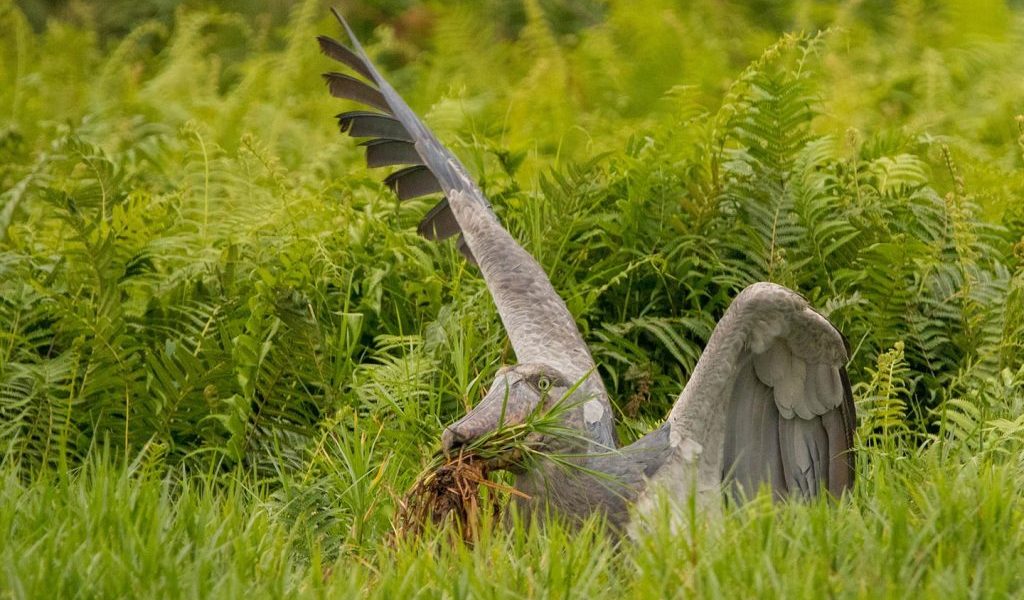Introduction
Tucked away in the northwestern region of Uganda, Murchison Falls National Park is a haven not only for big game lovers but also for birdwatchers from across the world. With over 450 bird species recorded, it stands as one of the most rewarding birding destinations in Africa. Whether you’re a casual observer or a seasoned birder, this vast and varied ecosystem — from riverbanks to savannahs — is a paradise for spotting rare, beautiful, and sometimes endangered birds.
This detailed guide will walk you through the top 10 must-see birds in Murchison Falls National Park, complete with birding tips, best locations, and how to optimize your Uganda birding safari experience.
Why Birdwatching in Murchison Falls is Exceptional
Murchison Falls offers a diverse range of habitats — including riverine forests, wetlands, open grasslands, savannah woodlands, and the Nile corridor — all of which support varied birdlife. This makes it an Important Bird Area (IBA) recognized by BirdLife International.
Birding highlights include:
- Endangered species like the shoebill stork
- Migratory birds from Europe and Asia
- Colorful endemics and localized species
- Easy sightings during game drives and boat cruises
Wildlife Viewing in Murchison Falls
BirdLife International – Murchison Falls IBA
Top 10 Birds to Look Out for in Murchison Falls
1. Shoebill Stork (Balaeniceps rex)
Status: Vulnerable
Where to Find: Nile Delta (boat cruise from Paraa)
Arguably the most sought-after bird in Uganda, the shoebill stork is known for its prehistoric appearance and massive shoe-shaped bill. They are best spotted during a boat safari along the Victoria Nile, especially early in the morning.
Shoebill Stork Sightings
Shoebill Conservation Project
2. Goliath Heron (Ardea goliath)
Status: Least Concern
Where to Find: Nile River shores, floodplains
The largest heron species in the world, the Goliath Heron is often seen standing statuesquely along the riverbanks. Its impressive size (over 1.5 meters tall) makes it easy to identify.
3. Abyssinian Ground Hornbill (Bucorvus abyssinicus)
Status: Vulnerable
Where to Find: Open savannah and grasslands (especially Buligi area)
These ground-dwelling hornbills are known for their deep booming calls and striking blue-and-red facial markings. Look out for them walking in pairs across the open plains.
4. African Fish Eagle (Haliaeetus vocifer)
Status: Least Concern
Where to Find: Victoria Nile, Lake Albert banks
The national bird of Uganda, the African Fish Eagle is famed for its loud, melodious call. You’ll often spot them perched in tall trees, scanning the waters for fish.
5. Red-throated Bee-eater (Merops bulocki)
Status: Least Concern
Where to Find: Near river cliffs and forest edges
One of the most colorful and social birds in the park. Colonies often nest in sandy banks, and you can observe them performing aerial acrobatics as they catch insects.
African Bee-eater Species Guide
6. Giant Kingfisher (Megaceryle maxima)
Status: Least Concern
Where to Find: Along the Nile River, especially during boat cruises
The largest kingfisher in Africa, it can be recognized by its large bill and speckled chest. Best seen during river safaris, where they dive for fish from overhanging branches.
7. Black-headed Lapwing (Vanellus tectus)
Status: Least Concern
Where to Find: Dry open areas and airstrips
Known for their sharp “tweek-tweek” call and fast wing beats, these lapwings are easy to spot during game drives in Buligi game tracks and along vehicle trails.
8. Secretary Bird (Sagittarius serpentarius)
Status: Vulnerable
Where to Find: Open grasslands and plains
This tall, eagle-like bird with long legs and dramatic crest is known for stomping snakes with its powerful feet. Spot them walking with an upright posture in dry areas.
Secretary Bird Facts – National Geographic
9. Northern Red Bishop (Euplectes franciscanus)
Status: Least Concern
Where to Find: Wetlands and near papyrus swamps
These tiny yet flamboyant birds are most beautiful during the breeding season, when males turn bright red and black. Watch them flit in and out of tall grasslands.
10. African Darter (Anhinga rufa)
Status: Least Concern
Where to Find: Nile River edges, submerged branches
Nicknamed the “snakebird” due to its long neck, the African darter swims with its body submerged and head out — resembling a snake. Commonly seen during Nile boat cruises.
Nile River Cruises in Murchison Falls
Best Times and Tips for Birdwatching
When to Visit
- Peak Birding Season: November to April (when migratory species arrive)
- Best Time of Day: Early mornings and late afternoons
What to Bring
- Binoculars (8x or 10x magnification)
- Field guide or birding app
- Camera with zoom lens
- Notebook or checklist
Recommended Birding Tours
- 3-Day Murchison Falls Birding Safari
- 7-Day Uganda Birdwatching Circuit (includes Budongo Forest)
- Custom private birding expeditions
Conservation and Responsible Birding
Birding in Uganda supports conservation through:
- Revenue from eco-tourism
- Community-based tourism projects
- Research and species monitoring efforts
You can contribute by:
- Booking with licensed, conservation-oriented operators
- Avoiding bird disturbance during nesting season
- Reporting rare species sightings to local guides or conservation bodies
Nature Uganda – Bird Conservation
Sustainable Travel Tips for Uganda
Conclusion
Birdwatching in Murchison Falls is a truly immersive and rewarding experience. Whether it’s locking eyes with a rare shoebill in the papyrus delta or capturing the vibrant flash of a bee-eater mid-flight, this park delivers some of the most spectacular bird sightings in East Africa.
Whether you’re on a dedicated birding tour or combining birding with a classic wildlife safari, Murchison Falls will not disappoint. Grab your binoculars and let the calls of Uganda’s wild symphony guide you through one of Africa’s most exciting birding frontiers.

